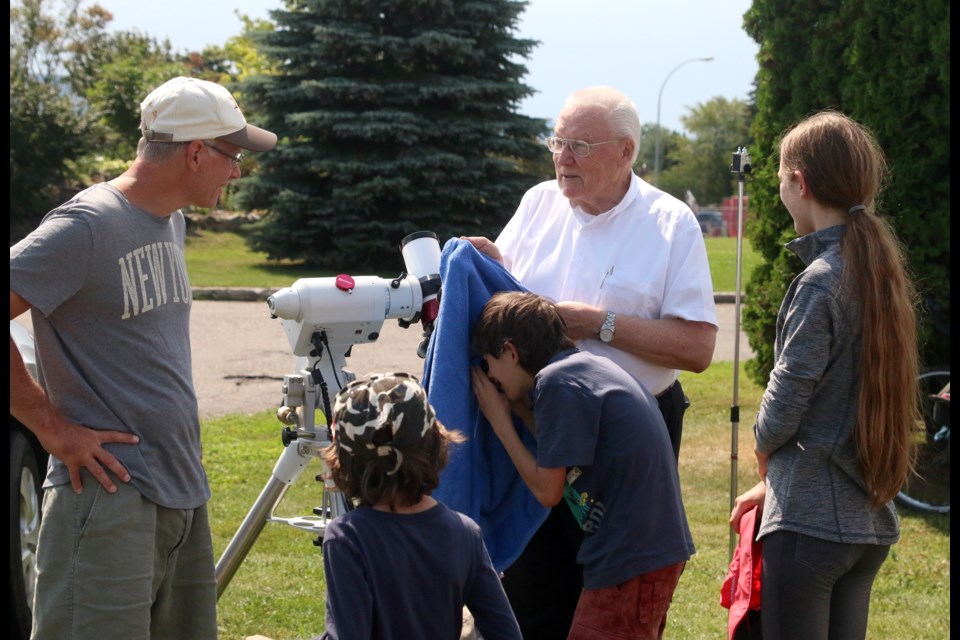THUNDER BAY - Millions of people across North America experienced a once in a lifetime event as the moon crossed between the Earth and the Sun darkening the skies.
A total solar eclipse, the first one since 1979, took place Monday afternoon. While the path of totality could only be seen from parts of the United States, it didn’t stop dozens of people from gathering at Hillcrest Park to take in this rare solar event.
“It was pretty cool,” said Abigail Sherlock, who came to the park with her dad and brothers. “It looked like a red crescent. It was really cool.”
“I really liked it,” her brother Timothy added. “It was like a black circle surrounded by dark red.”
For dad, Richard, it wasn’t his idea to come to the park, but the kid’s scientific curiosity turned out to be a good choice.
“The kids wanted me to bring them,” he said. “They had a lot of enthusiasm and really put the pressure on me and got me here. I’m glad we came.”
For those watching from Thunder Bay, about 74 per cent of the Sun was blocked by the Moon. Because of the dangers of looking at a solar eclipse, even a partial one, many people brought special viewing glasses, welder’s helmets, or homemade camera obscuras.
But luckily for the Sherlock family and many others, members of like Thunder Bay Centre of the Royal Astronomical Society, like Father Francisco, shared special telescopes and cameras fitted with lenses to view the event.
“Most of our members are in the United States to see the totality,” Francisco said. “I just wanted to offer it to the public. We don’t want to keep it to ourselves. We want to share it and show the others.”
Francisco said he was very pleased with the size of the crowd and everyone was very grateful that they could see the eclipse through a telescope, including the solar flares coming off the sun.
“It is one of those things that do not happen every day,” he said. “It teaches us something new. Most of the people who come here they say they see for the first time some flares. It’s a discovery for so many. That’s great that so many have the opportunity to see something and learn something.”
